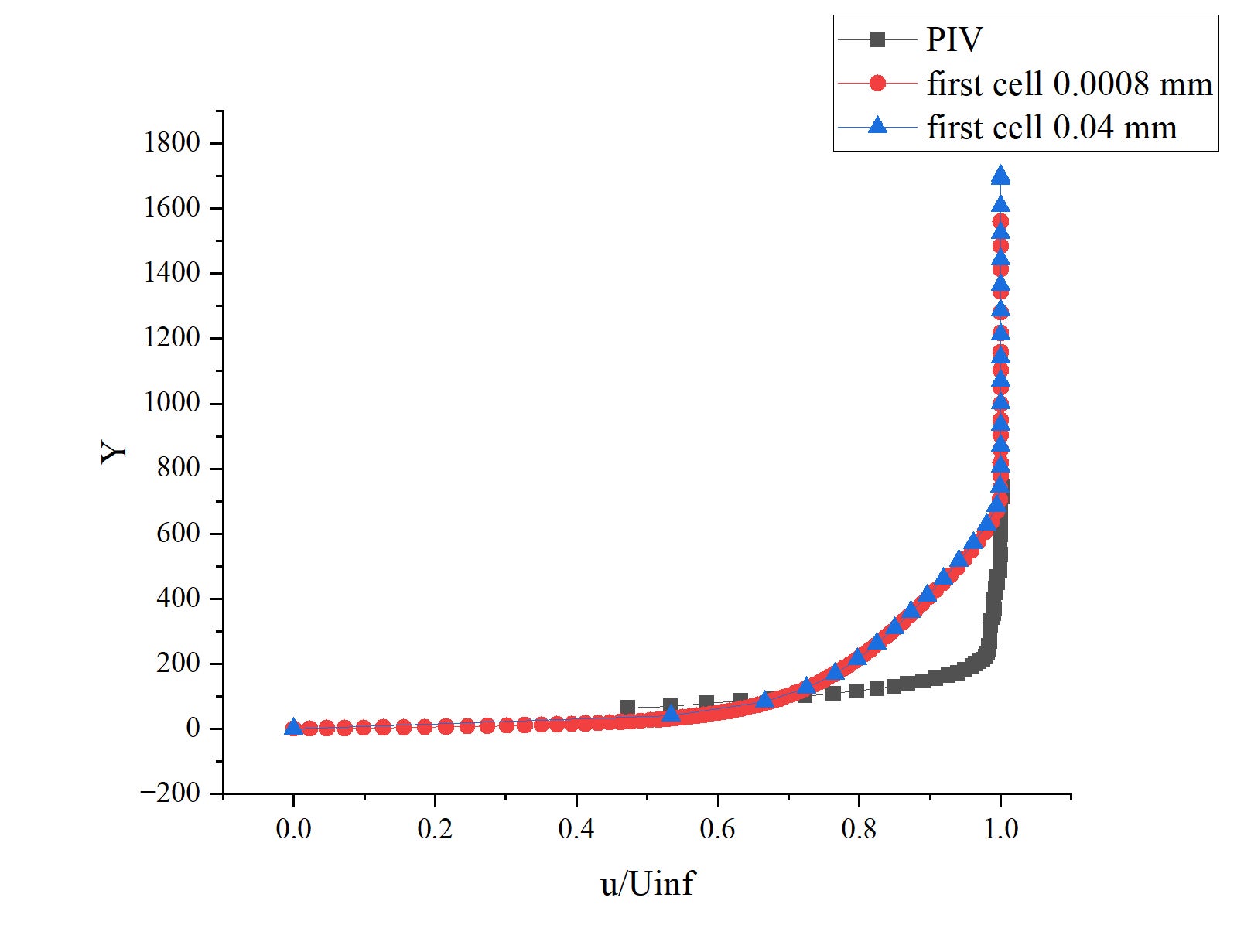TAGGED: boundary-layer, fluent, near-wall-treatment, shockwave, turbulence, y+
-
-
March 11, 2024 at 6:00 pm
cptblackburn
SubscriberI am trying to understand Shock - Boundary layer interactions. Currently, I am simulating the flow of M 1.7 over a flat plate, with impinging shock at various downstream locations. I wanted to resolve the boundary layer accurately. First I made a mesh with Y+ nearly 1, but the velocity profile did not match with the PIV measurements from the actual experiment. To figure out whether meshing is the issue, I increased the first cell thickness from 0.0008 to 0.04 mm. A comparison of the velocity profiles in both cases is attached here with PIV measurements. Why they are exactly similar? Then what is the use in keeping Y+ near 1 to get an accurate measurement? I am using kw SST turbulence model.

-
March 12, 2024 at 5:12 pm
Federico
Ansys EmployeeOther factors such as turbulence conditions (inlet) and/or wall roughness will have an impact on the resulting boundary layer.
k-w can do well (specially for a simple case of flow over a flat plate) when the y+ ~ 30-60.
-
- The topic ‘Near wall modeling’ is closed to new replies.



-
4613
-
1530
-
1386
-
1209
-
1021

© 2025 Copyright ANSYS, Inc. All rights reserved.







